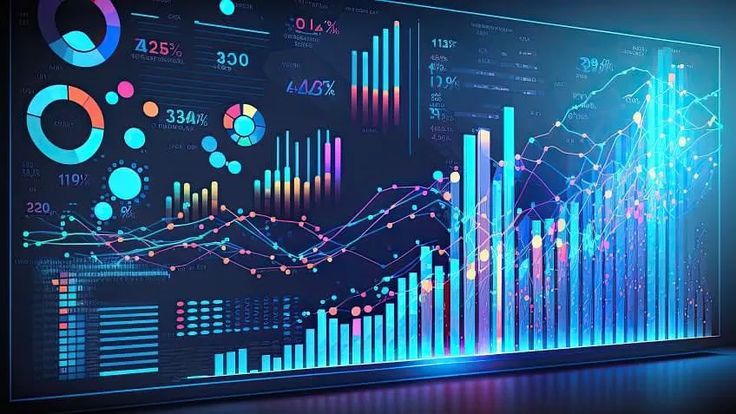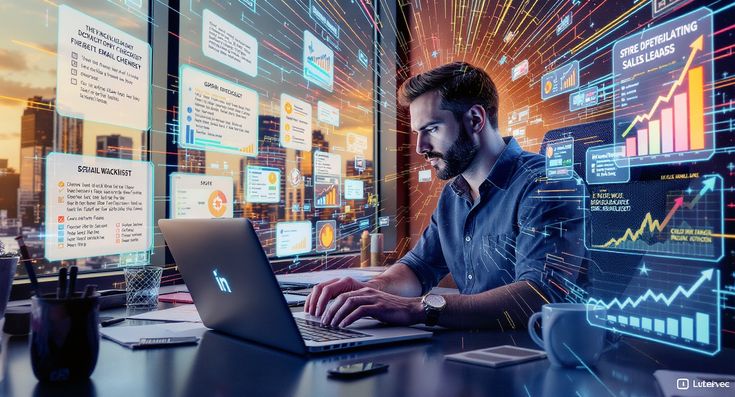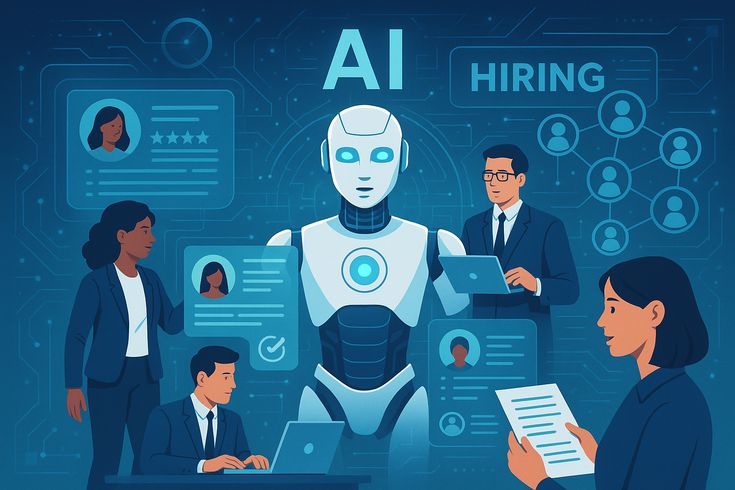1. Modest but Meaningful Inflation Increase by 2030

By 2030, the overall effect of artificial intelligence (AI) on inflation is projected to be modest, raising global inflation rates by approximately 0.1 to 0.3 percentage points. While this rise may seem small, it holds macroeconomic significance due to AI’s transformative influence on both production and consumption. The inflation increase stems mainly from heightened demand for AI-related goods and services,AI’s transformative influence expansion, and labor shifts caused by automation. As economies transition toward AI-driven industries, short-term inflationary pressures are inevitable because demand for computing power, advanced hardware, and skilled labor surges faster than supply. However, the inflationary effect remains moderate since AI also enhances efficiency and output. Hence, economists view this phenomenon as a controlled and transitional inflation—more of an adjustment to technological restructuring rather than an uncontrolled rise in general prices.
2. Demand-Side Pressure from AI Investments
One of the strongest drivers of inflation in the AI era is the surge in demand-side activity. The massive technologicalt in AI infrastructure—ranging from data centers and GPUs to specialized chips and robotics—will increase demand for capital goods and essential inputs. Both public and private sectors are channeling vast resources into AI integration, intensifying competition for technological components and raw materials. As industries modernize their systems with AI capabilities, production costs temporarily increase, leading to higher output prices.
Thank you for reading this post, don't forget to subscribe!Furthermore, governments investing in AI-powered governance and digital public infrastructure also contribute to the heightened demand cycle. This sustained investment wave AI’s transformative influence pressure but lays the foundation for long-term productivity gains that can eventually offset rising costs. Essentially, AI-induced capital formation drives inflation in the near term but acts as a catalyst for efficiency-driven growth later.
3. Supply-Side Productivity Gains Counteracting Inflation

On the supply side, AI serves as a deflationary force by improving productivity and operational efficiency across industries. Automation, predictive analytics, and machine learning enhance production speed, resource allocation, and supply chain coordination. As a result, firms can produce more output with the same or fewer inputs, reducing per-unit production costs. These gains in efficiency partially offset inflationary effects caused by increased demand.
Moreover, industries leveraging AI for logistics, manufacturing, and retail management can minimize waste, reduce transportation delays, and better manage inventory—all contributing to price stability. Therefore, while AI introduces initial inflation through capital investment, its productivity impact ultimately acts as a counterbalance, leading to a more stable equilibrium in price levels. Over time, this interplay defines whether inflation remains mild or accelerates.
4. Balance Between Opposing Economic Forces
The ultimate effect of AI on inflation depends on the delicate balance between opposing forces—demand-driven inflation versus supply-driven deflation. Rapid AI adoption could intensify demand faster than productivity benefits can materialize, while slower adoption might yield weaker demand but stronger cost reductions. Economies that manage to synchronize AI implementation, labor training, and policy adaptation will maintain stability. In contrast, those with delayed policy responses may face inflation spikes. Policymakers must closely monitor the adoption pace and distribution of AI investments to ensure macroeconomic equilibrium. The balance between these forces will determine not just inflation rates but also employment, growth, and inequality outcomes by 2030.
5. Regional Disparities in Inflationary Impact
AI’s inflationary effects will differ widely across regions. Economies heavily dependent on imports or lacking efficient production systems could see inflation rise by 0.3–0.8 percentage points. Such countries may experience bottlenecks in supply chains, limited domestic innovation, and higher import costs for AI technologies. Conversely, advanced economies like the U.S., Japan, or Germany—with strong infrastructure, skilled workforces, and digital readiness—will absorb AI integration more smoothly, facing only mild inflationary pressures around 0.1 percentage points.

This disparity highlights the importance of regional adaptability and infrastructure strength. For developing economies, inflation could also be influenced by exchange rate fluctuations and global commodity prices tied to AI-related demand surges. Thus, AI’s inflationary impact will be uneven but predictable based on technological capacity and market efficiency.
6. Central Banks Adopting Tighter Monetary Policies
To maintain price stability and policy credibility, central banks are expected to respond to AI-driven inflation with tighter monetary measures. Interest rates may rise modestly as institutions like the Federal Reserve and European Central Bank seek to prevent overheating in AI-investment-heavy sectors. These adjustments also reflect higher real returns on capital brought by AI’s productivity growth. Monetary tightening, however, must be carefully balanced—excessive restraint could stifle innovation and slow AI adoption. Central banks will increasingly rely on AI-powered analytics to monitor inflation indicators in real-time, enabling quicker and more data-driven responses. Thus, the era of AI-induced inflation will also redefine monetary governance itself, making policy both more reactive and technologically dependent.
7. Inflation Volatility Due to Uneven AI Adoption
AI integration across industries and regions will not occur uniformly, leading to fluctuations in price stability. Some sectors may experience rapid productivity gains, while others lag behind, creating inflationary mismatches. Furthermore, the time lag between investment and productivity realization may cause short-term inflation spikes followed by periods of deflation. Policymakers must manage this volatility through flexible interest rate policies and adaptive fiscal measures. As AI systems spread, their uneven impact on labor markets, wages, and supply chains could complicate inflation management, creating new challenges for economic stability between 2025–2030.
8. AI and Market Pricing Stability

The widespread adoption of AI-driven pricing systems will alter traditional market dynamics. By analyzing massive datasets, AI algorithms will help firms optimize prices in real time, potentially stabilizing prices and reducing sharp fluctuations. However, such systems could also lead to unintentional “algorithmic coordination,” where similar AI models set similar prices, reducing market competition. This could create subtle inflationary persistence even in the absence of collusion. Nonetheless, the precision of AI-enabled pricing may also prevent sudden price surges or collapses, thereby moderating volatility overall. Hence, AI’s role in price management introduces both opportunities for stability and risks of rigidity.
9. AI-Based Inflation Forecasting Models
AI and machine learning tools are revolutionizing economic forecasting. Central banks and research agencies now deploy AI-based inflation models capable of processing millions of data points in real-time. These tools enhance the accuracy of inflation projections and enable faster policy responses to changing economic trends. By predicting demand shocks, commodity price shifts, or supply disruptions early, AI forecasting minimizes lag effects and prevents inflation from spiraling. Such models transform macroeconomic governance by reducing uncertainty and providing empirical support for data-driven decisions. Consequently, AI acts as both a cause and a controller of inflationary trends in the digital economy.
10. Self-Fulfilling Inflation Expectations
AI forecasting systems not only predict inflation but also shape public expectations. If AI models consistently project modest inflation, consumers and businesses may adjust spending and investment behaviors accordingly, creating a self-reinforcing cycle of stability. Conversely, biased or exaggerated AI projections can fuel anxiety and disrupt markets, triggering self-fulfilling inflationary or deflationary spirals. Policymakers must therefore ensure transparency and accuracy in AI forecasting systems. Managing these expectations will become as critical as managing interest rates themselves in the AI-driven economy of 2030.
11. Structural Upward Shift in Baseline Inflation
As AI transforms industries and labor structures, economies may experience a mild but lasting upward shift in baseline inflation. This “structural inflation floor” results from technological restructuring, new service sectors, and elevated demand for digital infrastructure. Traditional tools such as rate hikes may have limited effect against this embedded inflation component. Policymakers will need new frameworks to balance growth and stability while recognizing that AI-driven economies operate with slightly higher natural inflation levels than pre-AI systems.
12. Sectoral Divergence: Inflation and Deflation Coexist
By 2030, economies will witness a dual trend—some sectors facing inflation, others deflation. AI-intensive sectors like robotics, computing, and cloud infrastructure may experience deflation due to technological improvements and cost reductions. In contrast, energy-dependent and raw material–based industries may see rising prices as demand for power, chips, and rare metals surges. This coexistence of deflationary and inflationary trends will make aggregate inflation more complex to interpret, demanding more sophisticated policy and data analysis tools.
13. Role of Government Taxation on AI Infrastructure
Governments may introduce AI-specific taxes to regulate the industry or fund public welfare. However, such fiscal measures—like compute taxes or AI usage fees—could inadvertently push up prices across industries by increasing operational costs. Unless balanced with subsidies or productivity offsets, these taxes could amplify inflationary pressures. Thus, policymakers must strike a balance between revenue generation, regulation, and economic stability to avoid unintended inflation acceleration from AI taxation policies.
14. Misallocation and AI Investment Bubbles
If capital is misdirected into inefficient or speculative AI ventures, economies risk creating asset bubbles. When these bubbles burst, they can destabilize financial markets, reduce investor confidence, and produce simultaneous inflationary and deflationary effects. Inflation may rise as capital retreats from productive sectors, while deflation can occur through demand contraction. Preventing misallocation requires regulatory oversight, transparent data use, and sound risk management across AI investments. Ensuring responsible innovation will be crucial for sustainable inflation control.
15. Policy Challenges for Economic Stability
The dual nature of AI’s impact—stimulating demand but reducing costs—creates a policy dilemma. Governments must manage inflation without stifling innovation. Overly aggressive rate hikes could suppress AI adoption, while leniency could allow inflation to escalate. Coordinating fiscal, trade, and technological policies will be essential to maintain equilibrium. Additionally, AI adoption in monetary institutions themselves can strengthen responsiveness to inflationary patterns, reducing policy lag and enhancing credibility.
16. Long-Term Deflationary Shift After 2030
After 2030, once AI-driven productivity gains stabilize, inflationary pressures are expected to decline. As automation and intelligent systems become widespread, production efficiency will dominate cost structures, leading to lower prices. The long-term trend could tilt toward mild deflation as technology replaces labor-intensive processes and reduces marginal costs. This phase will mark a new economic equilibrium where AI enhances both productivity and price stability—transforming inflation management for decades ahead.




